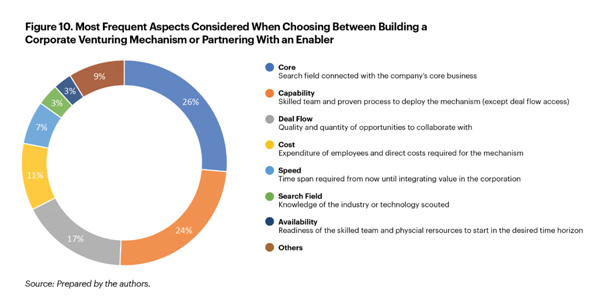
IESE Business School, in collaboration with GELLIFY and ACCIONA, are releasing a new report on how corporations can boost their capabilities and efficiency collaborating with entrepreneurs in a highly volatile market.
Supported by interviews with 92 chief innovation officers and equivalents in Asia, North and South America, and Europe, the report Open Innovation: Improving Your Capability, Deal Flow, Cost and Speed with a Corporate Venturing Ecosystem, sheds light on what companies such as Disney, Samsung and Formula 1 have in mind when choosing between engaging directly with a start-up or through an intermediary? How can the right intercessor be chosen?
The challenges
A promising solution
Companies are increasingly complementing their efforts with corporate venturing enablers—from private accelerators to research centers, embassies, or even corporations—to facilitate collaborations with start-ups.


The implications
How does this affect corporates? Since corporations are to a greater extent working with start-ups and offering similar benefits to entrepreneurs—teaming up with enablers can improve their value proposition, thereby aggregating value. Moreover, it can reduce its innovation cost by sharing it with others. It can also increase its deal-flow access and ability to identify opportunities. However, enablers are not just consulting firms: the reality is far richer.
How does this affect enablers? Forget “much ado about nothing.” A proven capability is the most frequent aspect considered when choosing between two enablers (in 38% of the cases). One should spend less time packaging enablers’ assets and put more effort toward developing a skilled team with a proven method to serve the corporation.
